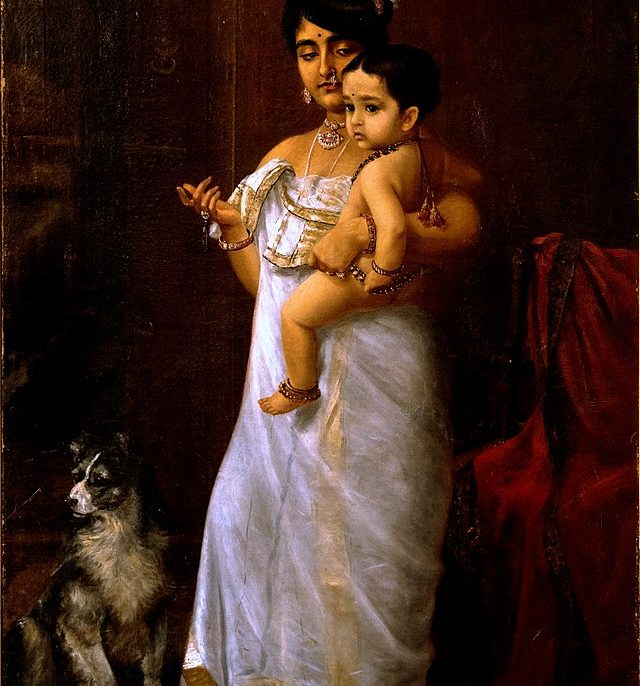Raja Ravi Varma’s art marks an historic turn in the development of Indian modern art and Indian artists, at the beginning of the movement for Indian Independence. Ravi Varma’s works, which incorporated the use of oil as a medium and a distinctly European style of realism, influenced other artists and shaped a new perception of “Indian Art”. All this took place at a time in Indian history when a “modern and progressive India” was the call of the day. Born in Kilimanoor, Kerala, in 1848 to a princely family, Ravi Varma was educated as a court artist in Trivandrum. Through the 1860’s he continued to study and work in Travancore where other court painters such as Ramaswamy Naicker of the Tanjore School first adopted oil as a medium.

In 1866, Ravi Varma was married to Maharani Lakshmibai’s sister of the Travancore royal family and was allowed to use the title, ‘Koil Tampuran’ since he was not a “full Raja” which he has inscribed on some of his works. (source: Maharaja Fatesingh Museum Trust, Dr. Ratan Parimoo) Just a couple of years later, his influences came from an opportunity to observe European portrait artist, Theodore Jensen, at work, which presumably prompted Ravi Varma to develop his own style. This unique style incorporated a European naturalism and realism, with distinctly Indian mythological themes. The distinguishing factor, however, was Ravi Varma’s depiction of mythological figures in a natural human style rather than the traditional supernatural imagery used to convey gods, goddesses and their myths or tales. Ravi Varma’s groundbreaking work lay not only in his style of art, but also in his influence on other artists and collectors.

Over the 1870s and 1880s, he was commissioned for several portraits, participated in exhibitions and received several awards.However, it was after Maharaja Sayajirao Gaekwad invited Ravi Varma to Baroda and became his most significant patron, that Ravi Varma gained in eminence. His work included portraits of members of royal Indian families, foreign dignitaries and British colonial officials. Through this time, he was assisted by his brother, Raja Raja Varma, who devoted his life to working with Ravi Varma. Raja Ravi Varma’s work documents historical relationships and events, largely through a straightforward portraiture. In 1892, Ravi Varma began his own press in Bombay, where he made color reproductions of his own work and extended his reach. This did in fact allow him to become one of the most prolific artists of his time. Raja Ravi Varma has had many significant exhibitions, both in India and internationally. However, his first was in Madras, where he submitted “Nair woman with Jasmine flower in her hair” and won the Governor’s Gold Medal. From there he went on to paint for several of the royal families in India and for colonial and royal visitors from England. Raja Ravi Varma died in Kilimanoor, his birthplace, on October 2, 1906.

